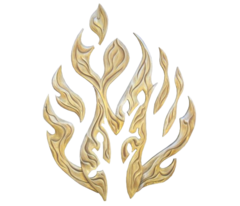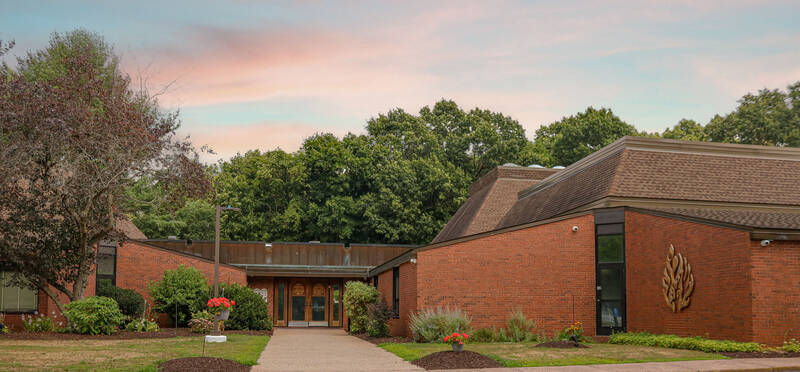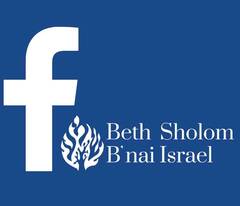Loneliness: Rosh Hashanah Day 2 - September 15, 2015
Rabbi Richard Plavin
| Author | |
| Date Added | |
| Automatically create summary | |
| Summary |
In our Machzor Rosh HaShanah is referred to as the anniversary of creation – Hayom Harat Olam, and an interesting question occurred to me: Why did God bother?
The Almighty must have had it pretty good before the creation of this world, and in particular, before creating humanity. I can tell you from my own experience, people can be pretty annoying. Did God really need all those headaches that the creation of man and woman brought upon Him? If He had just stopped right after he created the chimps and the zebras, wouldn’t God have avoided a lot of trouble and pain?
When I was a student at the seminary we loved to tell stories about our revered teachers. One story told of the great Bible scholar H.L. Ginzberg and the renowned theologian, Abraham Joshua Heschel. Heschel met Ginzberg in the stairwell and posed this question: Who was the most tragic figure in the Bible? Ginzberg provided the most obvious answers: Jacob, Job, Jeremiah, but Heschel rejected them all. He said that the most tragic figure in the Bible was God. Why? Because God was so alone.
Think about it: we monotheists see God’s oneness as His essential characteristic. One of the most beloved prayers in our liturgy is Adon Olam. Its possible that is because it signals the end of the service, but Adon Olam conveys some very important theological points. We sing “V’hu Echad v’ayn shaynee” “He is One and there is no second”, and if you think about that line from God’s perspective, it must be very painful to be so alone. Perhaps the answer to why God bothered to create humanity is that he was desperately lonely and He needed company. That also explains why God created us “B’tzlmo – in His image.” We like to hang out with people like ourselves, and it seems God does too. I am being a bit irreverent in talking about whom God likes to hang out with, but so be it. I want to distinguish between aloneness and being alone. The concept of God being One and alone is magnificent, and provides a model for us to emulate. I will return to the theme of solitude, but now I want to turn back to the topic of loneliness.
The ultimate story in the Talmud about loneliness concerns a man called Choni HaMagal, Choni the Circlemaker.” The Talmud tells us that Choni fell asleep one night and did not wake up for 70 years. When he woke up and looked around he discovered that everyone he had ever known was gone. He is utterly abandoned. His pain is so intense that he prays for death to escape his intolerable loneliness. The Talmud uses a memorable phrase in that story. “O chevruta, o metuta” “Give me companionship or give me death.” Could it be that Patrick Henry borrowed his syntax from Choni HaMaagal?
No one here today needs a prayer or a Biblical text or a Talmudic tale to know that loneliness is painful. Loneliness is an equal opportunity oppressor. The rich and the poor alike feel the pain. If I asked for a show of hands of people here who at some point in life have felt the pain of loneliness, the only hands that would not go up would be those of you aren’t actually listening.
So often people share with me the depth of their sorrow. The man who lost a parent who had attained the age of 100 - and feels utterly bereft. The emptiness felt by a woman who lost a spouse after decades of marriage and suddenly has to adjust to being single again, whether the relationship was severed as a result of death or a bitter divorce. In either case, the pain is devastating. But it doesn’t take catastrophic events to trigger loneliness. It can plague the recently retired person who used to have a structure to life and people with whom to relate at work, and suddenly that is gone. Loneliness can exist for people who are still in the work world as well. Some people leave home so early in the morning and return so late at night, they hardly have a moment to see their children or spouse. People can feel lonely in a crowded room – like this one – if they don’t feel a connection with the people there. It was Thoreau who wrote “the city life is millions of people being lonesome together.”
A sage in the Talmud was asked to account for his success in life and he responds that he was so enthusiastic in greeting people that he was sure to approach them and say ‘hello’ before they had the chance to approach him. I wonder: would he have been so likely to approach someone with a greeting if that person was staring into a Smartphone and had ear-buds blocking his hearing?
Twenty years ago who heard of the concept we call ‘social media’ but in recent years, it has absolutely overtaken the world. Technology has put a new and interesting twist on the concept of loneliness. It has made communicating so much easier, and yet true connection remains elusive. If the meaning of “friend” is someone who shares your postings on Facebook, is that actually friendship? If communication is limited to 144 characters, what truly becomes of your character, and is having many Twitter followers the same as having friends who value your opinion and companionship?
We are connecting with more people - and we are more alone than ever. You have likely seen the same cartoons I have seen: spouses in bed, each looking at their smartphone, or the family all gathered around the dinner table, but no one talking, as they text their so called friends.
Jonathan Safran Foer wrote an essay entitled “How Not To Be Alone.” He laments, “a funny thing happened. We have begun to prefer the diminished substitutes. … Leaving a message on someone’s machine is easier than having a phone conversation – you can say what you need to say without a response; it’s easier to check in without becoming entangled. I bet all of us call people when we know they are not available to pick up on the other end. Shooting an e-mail is easier still, because we can hide behind the absence of vocal inflection, and of course there’s no chance of accidentally catching someone. Each step “forward” has made it easier, just a little, to avoid the emotional work of being present, to convey information rather than humanity.”
Perhaps the time has come to take a step “backward.” To confront our loneliness, let’s by-pass the technology and try to make genuine connections. That is no small task. It won’t be easy, and for some, it will be especially difficult, but our tradition offers some wonderful guidelines.
One of the most basic tenants of our faith is the importance of community, of not separating ourselves from others. Or, as it says in Pirke Avot, the Ethics of the Sages, “Al tifrosh min ha-tzibur – separate yourself not from the community.” Two of the most well known lines in our tradition stress the importance of connecting with others. Leviticus teaches, “Love your neighbor as yourself.” Clearly, that requires having a relationship with your neighbor. The second aphorism is from the Talmud. “Kol Yisrael arayvim zeh bazeh – All Jews are responsible for one another.”
Being responsible, caring about others, can be a key strategy in dealing with the pain of loneliness. The Jewish people is renowned for its stress on Tzedakah, dealing righteously with those in need. It is an essential part of our DNA. You know that famous line in the Unetaneh Tokef prayer – “U’tshuvah, u’tephillah, u’tzedakah – Repentance, prayer and tzedakah can ease the evil decree.” Why is tzedakah in that line-up? Is it like in the medieval church where one could buy an indulgence to gain absolution for sin? No, that is not it at all. I think the answer is this: people who are tzedakah oriented, who care about giving to others, focus just a bit less on themselves and when that evil decree comes upon them – as it does on all of us at some point – your perspective is different. You’ve heard complaints about the me-generation. Perhaps today, we are in the ‘selfie-generation’ and that kind of narcissism can surely exacerbate the pain of loneliness, or even cause it.
Our tradition, historically and here today in our own congregation, offers so much that can be utilized to combat the anguish of loneliness.
Remember Choni who woke up after 70 years and felt himself so alone. Perhaps - had he gone into a shul like ours, and found other Jews saying the same prayers he recalled from 70 years earlier, he would not have felt so despondent. Maybe if that shul had a nice Kiddush, or better yet a luncheon, he would have found someone to talked to He could have told them a story that was absolutely unbelievable.
The root of the word synagogue is ‘syn.’ No, not that kind of sin. S-Y-N is the Greek prefix that implies togetherness. In Hebrew a synagogue is a Bet Kneset, a place where people assemble. A ‘congregation’ is where they congregate. Synagogues came to be not so much for people to find God, but for Jews to find each other.
Why do we have the concept of the minyan? Because we want Jews to get together to say their prayers. Because most often, the answer to your most heart-felt prayer, the prayer for relief from loneliness, comes not from God but from your fellow Jew. Our tradition here of Shabbat lunch together at least once a month is wonderful. At the lunch table we have the opportunity to sit with others, sometimes people we haven’t met before, and we get to know them. The essential is getting together “Panim el panim,” the phrase that describes God’s contact with Moses, “face to face,” not Facebook to Facebook.
Rabbi Mordechai Kaplan, was perhaps the most influential American rabbi of the early 20th century. He said that the primary purpose of a synagogue is “to combat individualism and to weld Jews who live in the neighborhood into a conscious communal unity.” Note that he talks about a neighborhood. That concept in most places is essentially extinct. I once counted 26 different zip codes on our membership list. The function of the congregation today as a unifying element is far more important than it was in Kaplan’s day.
When a prospective convert to Judaism comes before the Bet Din, the rabbinic tribunal, the rabbis ask a few questions. I recall when one of the rabbis asked, “If you move to a community far away from any other Jews, what will you have in your home and in your life to remind you of your Jewish identity?” The candidate gave wonderful answers: Jewish books and periodicals, a kosher kitchen, taking off from work for the holidays to be with family, muzuzot on the doors and so on. The rabbi agreed these were all important, but said he would have been more impressed if the person had responded that a Jew should never move to a place where other Jews don’t live. Community is an essential of Jewish existence. It is an essential bulwark against loneliness.
When the cause of loneliness is loosing a loved one, the pain can be very difficult to bear, and community can be so important at that time.
Last month I wrote a bulletin article about how to make a Shiva call, how to bring comfort to a mourner. A man that had recently lost his wife told me that my message was right on target. I had written that too many people think that the most appropriate time for a shiva visit is at the time of the evening service. This recent mourner said that it was certainly good to have a minyan, but the crowd in his house at the time of the evening service was overwhelming. What he really would have appreciated, he told me, were a few people coming by to see him during those lonely afternoon hours, when he was so by himself in his big house.
Another opportunity to combat loneliness is by connecting with the community to do good works. We have a vibrant Social Action committee that does important things, and the very best way to help your self is to help others. Getting involved in Tikun Olam, repairing this world, can help in two ways. It helps others through the project in which you are involved and, it helps the participant because she connects with other people who share her values.
Getting involved in Torah study can also be a strategy to combat loneliness. The word for a study partner in the Yeshiva world is ‘Chevrusa.’ The root of the word implies connection. Through study, you can connect. Not only with your study partner, but with community, and, if you do it right, you can connect with God. Professor Louis Finkelstein used to say, “When I pray, I talk to God. When I study, God talks to me.”
That’s something to aim for.
There is a story about the Hasidic master, the Gerer Rebbe. He asked one of his disciples, “How is Moshe Yakov doing?” The disciple said he didn’t know. “What?” shouted the Rebbe. “You don’t know? You pray under the same roof, you study the same Gemora, you serve the same God, yet you tell me you don’t know how Moshe Yakov is doing – whether he needs help or comforting? How can that be?”
Rabbi Jack Riemer wrote a prayer called “We cannot merely pray to you.” The responsive reading lists many things we can do to help our society and our world. It ends with these words: “Therefore, we pray to You instead, O God for strength, determination and will power - to do, instead of just to pray, to become instead of merely to wish.”
And know this as well: my door is always open, and God willing will continue to be for many years to come. I truly care about everyone in this congregation. Please, feel free to call, stop by, or yes, even email so we can set a time to sit together and open our hearts.
As the Torah says, “It is not good for man to be alone.” With God’s blessing and our determination, we can create the bonds of community that will alleviate some of the pangs of loneliness. Action, involvement, volunteerism and faith in God; these are the best antidotes for loneliness. Cast your lot in with us and be truly a part of our community. It may not at first be easy, but in the words of the Talmud, “the reward will be commensurate with the effort.”
Shana Tova – May this be a year of blessing for you and all your dear ones.
Fri, October 31 2025
9 Cheshvan 5786
Join Our Mailing List
Today's Calendar
| Candle Lighting : 5:28pm |
: 6:00pm |
Friday Night
| Candle Lighting : 5:28pm |
: 6:00pm |
Shabbat Day
: 10:00am |
| Havdalah : 6:30pm |
Upcoming Programs & Events
Nov 2 Daylight Savings Time ENDS Sunday, Nov 2 |
Nov 2 |
Nov 2 East Side of the River Youth Outing Sunday, Nov 2 1:30pm |
Nov 3 Sisterhood Book Club Monday, Nov 3 7:40pm |
Nov 4 Heart & Philosophy: Adult Education Tuesday, Nov 4 7:30pm |
Candle Lighting
| Friday, Oct 31, 5:28pm |
Havdalah
| Motzei Shabbat, Nov 1, 6:30pm |
Shabbat Mevarchim
| Shabbat, Nov 15 |
Like us on Facebook!

Beth Sholom B'nai Israel
400 East Middle Turnpike Manchester, CT 06040
Phone: 860-643-9563 Email: Admin@myshul.org
Fax: 860-645-3965

Privacy Settings | Privacy Policy | Member Terms
©2025 All rights reserved. Find out more about ShulCloud



